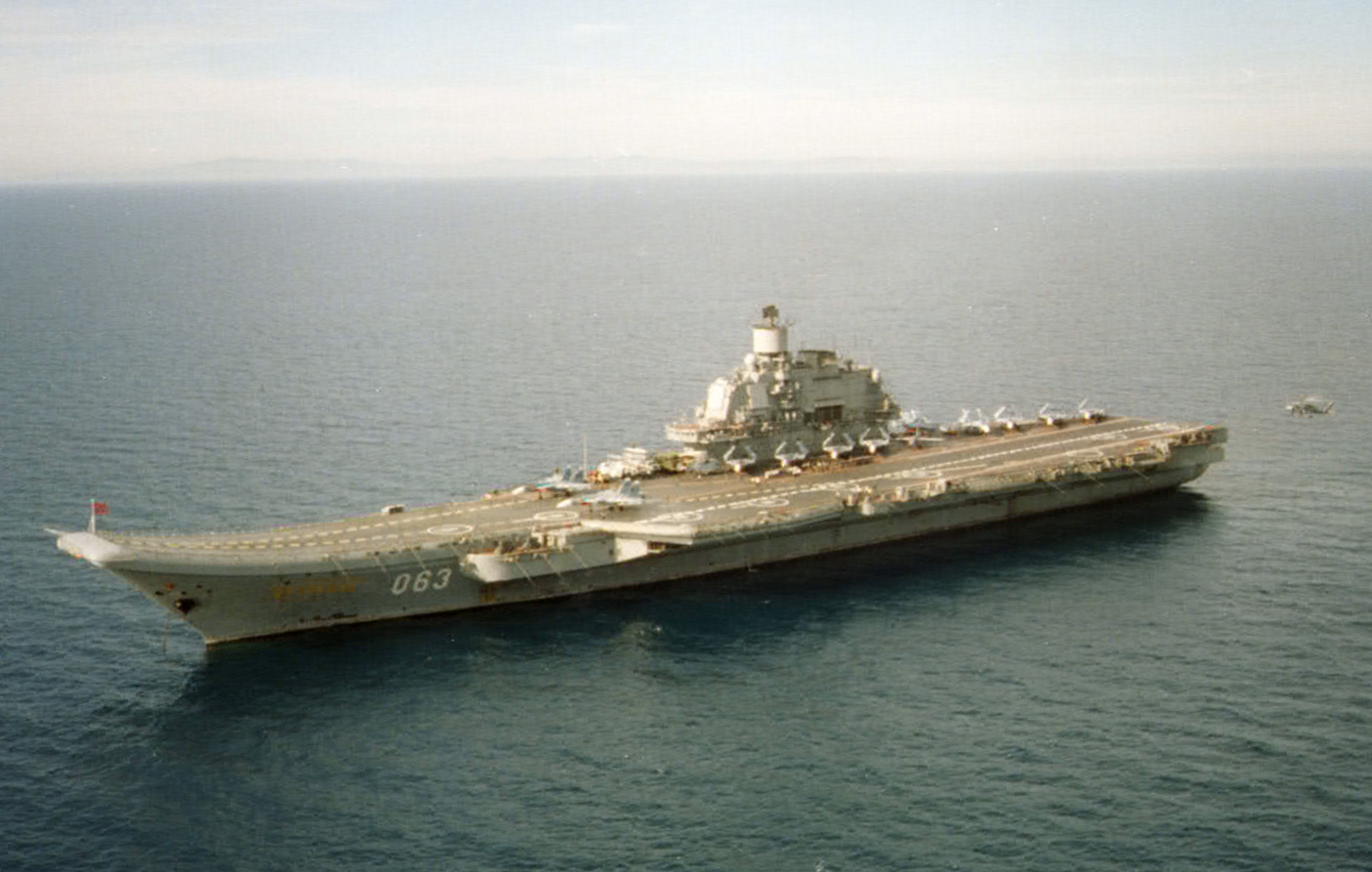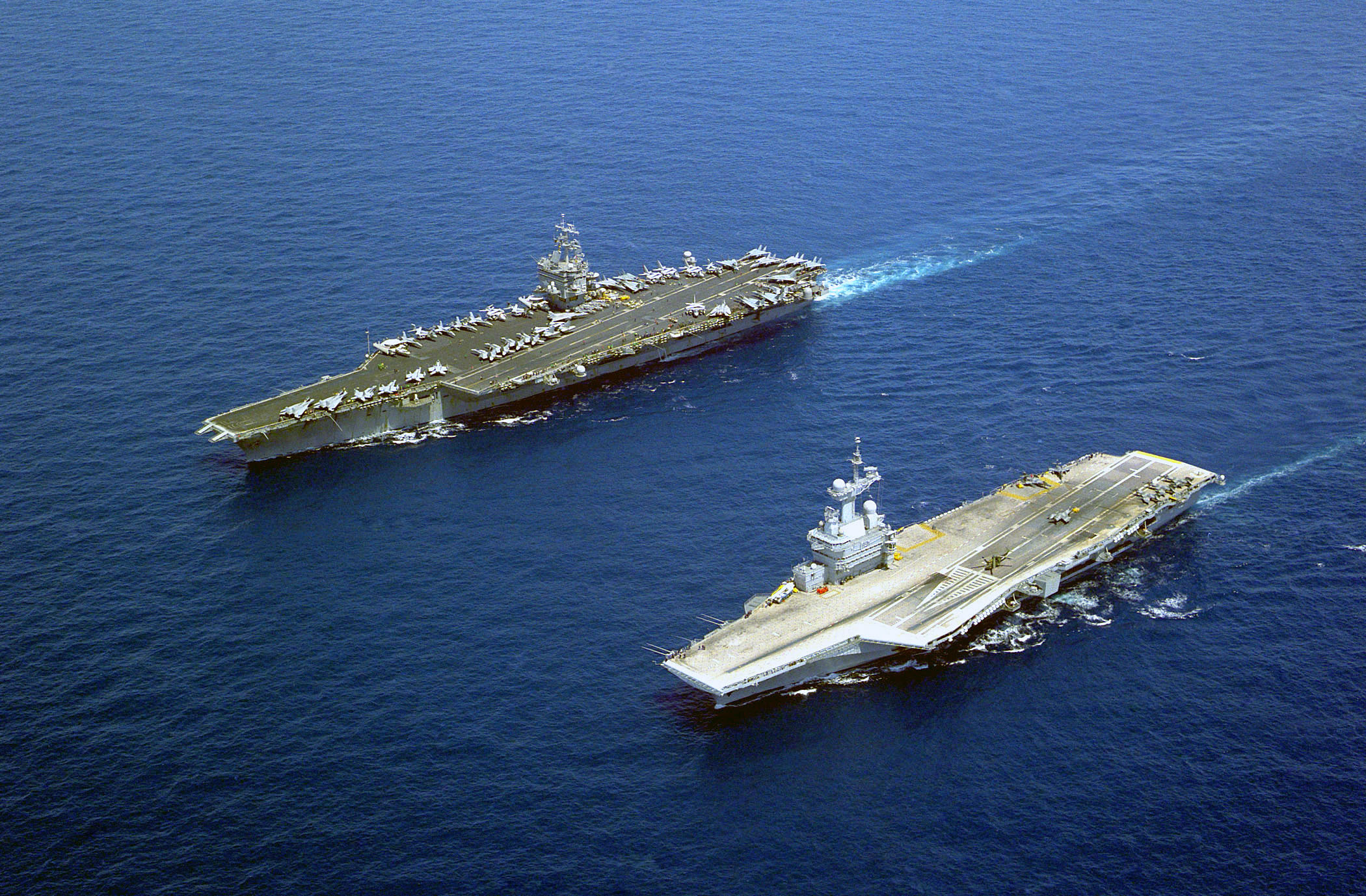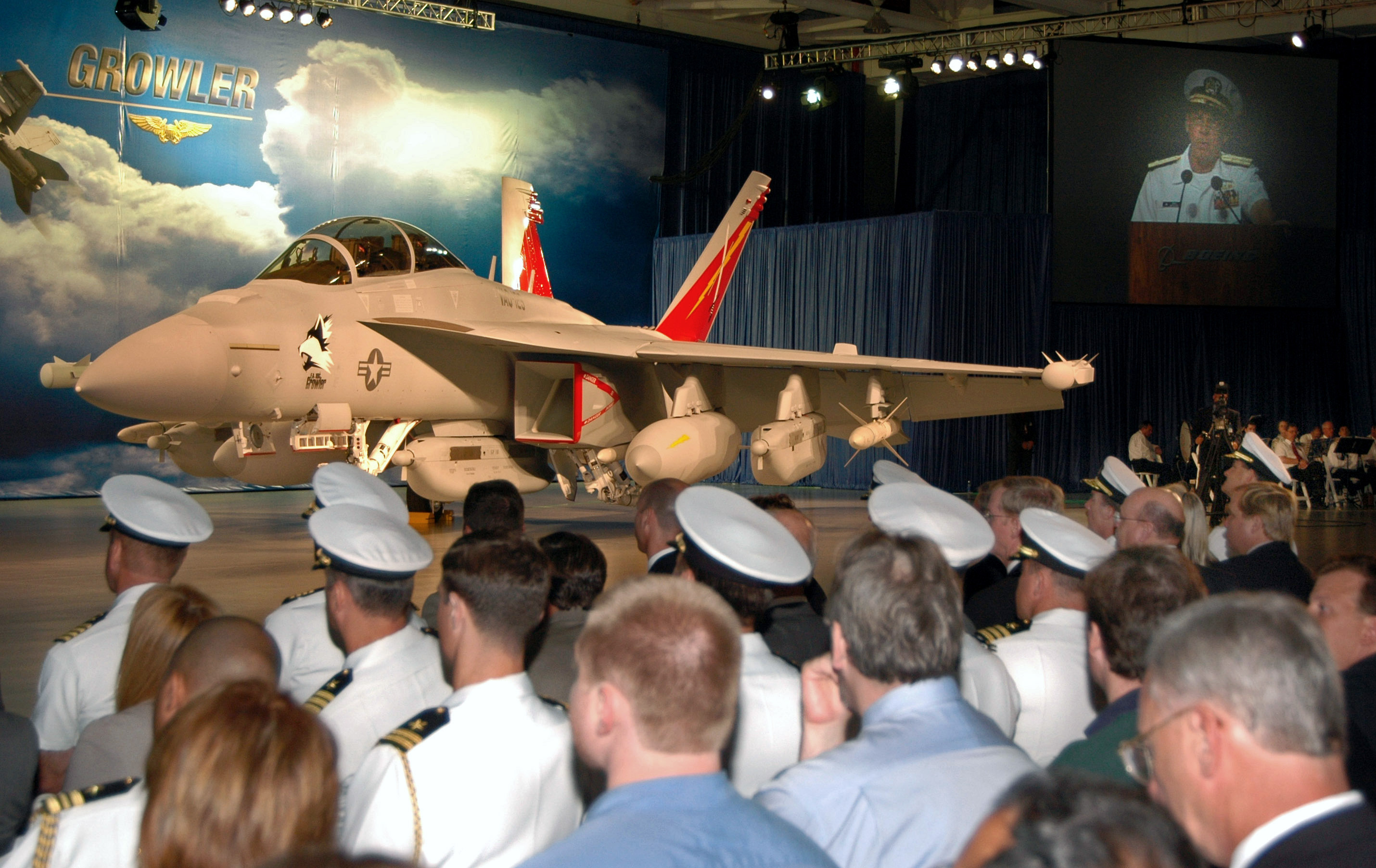|
CATOBAR
CATOBAR ("Catapult Assisted Take-Off But Arrested Recovery" or "Catapult Assisted Take-Off Barrier Arrested Recovery") is a system used for the launch and recovery of aircraft from the deck of an aircraft carrier. Under this technique, aircraft launch using a catapult- assisted take-off and land on the ship (the recovery phase) using arrestor wires. Although this system is costlier than alternative methods, it provides greater flexibility in carrier operations, since it imposes less onerous design elements on fixed wing aircraft than alternative methods of launch and recovery such as STOVL or STOBAR, allowing for a greater payload for more ordnance and/or fuel. CATOBAR can launch aircraft that lack a high thrust to weight ratio, including heavier non-fighter aircraft such as the E-2 Hawkeye and Grumman C-2 Greyhound. Types The catapult system in use in modern CATOBAR carriers is the steam catapult. Its primary advantage is the amount of power and control it can provide. D ... [...More Info...] [...Related Items...] OR: [Wikipedia] [Google] [Baidu] |
Aircraft Carrier
An aircraft carrier is a warship that serves as a seagoing airbase, equipped with a full-length flight deck and facilities for carrying, arming, deploying, and recovering aircraft. Typically, it is the capital ship of a fleet, as it allows a naval force to project air power worldwide without depending on local bases for staging aircraft operations. Carriers have evolved since their inception in the early twentieth century from wooden vessels used to deploy balloons to nuclear-powered warships that carry numerous fighters, strike aircraft, helicopters, and other types of aircraft. While heavier aircraft such as fixed-wing gunships and bombers have been launched from aircraft carriers, these aircraft have not successfully landed on a carrier. By its diplomatic and tactical power, its mobility, its autonomy and the variety of its means, the aircraft carrier is often the centerpiece of modern combat fleets. Tactically or even strategically, it replaced the battleship in the ... [...More Info...] [...Related Items...] OR: [Wikipedia] [Google] [Baidu] |
STOBAR
STOBAR ("short take-off but arrested recovery" or "short take-off, barrier-arrested recovery") is a system used for the launch and recovery of aircraft from the deck of an aircraft carrier, combining elements of "short take-off and vertical landing" (STOVL) with "catapult-assisted take-off but arrested recovery" (CATOBAR). Aircraft launch under their own power using a ski-jump to assist take-off (rather than using a catapult). However, the planes are conventional, rather than STOVL aircraft, and thus require arrestor wires to land on the ship. The STOBAR system is simpler to build than CATOBAR. , it has been used regularly on Russian, Indian, and Chinese carriers. Advantages Compared to CATOBAR, STOBAR is less expensive to develop. It is easier to operate than a CATOBAR configuration, which requires large number of operators to launch the aircraft. Lack of any moving parts in ski-jump makes it less expensive to maintain the launch system. It does not require any additional sy ... [...More Info...] [...Related Items...] OR: [Wikipedia] [Google] [Baidu] |
Lockheed Martin F-35 Lightning II
The Lockheed Martin F-35 Lightning II is an American family of single-seat, single-engine, all-weather stealth multirole combat aircraft that is intended to perform both air superiority and strike missions. It is also able to provide electronic warfare and intelligence, surveillance, and reconnaissance capabilities. Lockheed Martin is the prime F-35 contractor, with principal partners Northrop Grumman and BAE Systems. The aircraft has three main variants: the conventional takeoff and landing (CTOL) F-35A, the short take-off and vertical-landing (STOVL) F-35B, and the carrier-based (CV/ CATOBAR) F-35C. The aircraft descends from the Lockheed Martin X-35, which in 2001 beat the Boeing X-32 to win the Joint Strike Fighter (JSF) program. Its development is principally funded by the United States, with additional funding from program partner countries from NATO and close U.S. allies, including the United Kingdom, Australia, Canada, Italy, Norway, Denmark, the Nethe ... [...More Info...] [...Related Items...] OR: [Wikipedia] [Google] [Baidu] |
Steam Catapult
An aircraft catapult is a device used to allow aircraft to take off from a very limited amount of space, such as the deck of a vessel, but can also be installed on land-based runways in rare cases. It is now most commonly used on aircraft carriers, as a form of assisted take off. In the form used on aircraft carriers the catapult consists of a track, or slot, built into the flight deck, below which is a large piston or ''shuttle'' that is attached through the track to the nose gear of the aircraft, or in some cases a wire rope, called a catapult bridle, is attached to the aircraft and the catapult shuttle. Other forms have been used historically, such as mounting a launching cart holding a seaplane on a long girder-built structure mounted on the deck of a warship or merchant vessel, but most catapults share a similar sliding track concept. Different means have been used to propel the catapult, such as weight and derrick, gunpowder, flywheel, air pressure, hydraulic, and steam po ... [...More Info...] [...Related Items...] OR: [Wikipedia] [Google] [Baidu] |
Aircraft Catapult
An aircraft catapult is a device used to allow aircraft to take off from a very limited amount of space, such as the deck of a vessel, but can also be installed on land-based runways in rare cases. It is now most commonly used on aircraft carriers, as a form of assisted take off. In the form used on aircraft carriers the catapult consists of a track, or slot, built into the flight deck, below which is a large piston or ''shuttle'' that is attached through the track to the nose gear of the aircraft, or in some cases a wire rope, called a catapult bridle, is attached to the aircraft and the catapult shuttle. Other forms have been used historically, such as mounting a launching cart holding a seaplane on a long girder-built structure mounted on the deck of a warship or merchant vessel, but most catapults share a similar sliding track concept. Different means have been used to propel the catapult, such as weight and derrick, gunpowder, flywheel, air pressure, hydraulic, and steam ... [...More Info...] [...Related Items...] OR: [Wikipedia] [Google] [Baidu] |
Electromagnetic Aircraft Launch System
The Electromagnetic Aircraft Launch System (EMALS) is a type of aircraft launching system developed by General Atomics for the United States Navy. The system launches carrier-based aircraft by means of a catapult employing a linear induction motor rather than the conventional steam piston. EMALS was first installed on the lead ship of the , the USS ''Gerald R. Ford''. Its main advantage is that it accelerates aircraft more smoothly, putting less stress on their airframes. Compared to steam catapults, the EMALS also weighs less, is expected to cost less and require less maintenance, and can launch both heavier and lighter aircraft than a steam piston-driven system. It also reduces the carrier's requirement of fresh water, thus reducing the demand for energy-intensive desalination. Design and development Developed in the 1950s, steam catapults have proven exceptionally reliable. Carriers equipped with four steam catapults have been able to use at least one of them 99.5% of t ... [...More Info...] [...Related Items...] OR: [Wikipedia] [Google] [Baidu] |
Arrestor Wires
An arresting gear, or arrestor gear, is a mechanical system used to rapidly decelerate an aircraft as it lands. Arresting gear on aircraft carriers is an essential component of naval aviation, and it is most commonly used on CATOBAR and STOBAR aircraft carriers. Similar systems are also found at land-based airfields for expeditionary or emergency use. Typical systems consist of several steel wire ropes laid across the aircraft landing area, designed to be caught by an aircraft's tailhook. During a normal arrestment, the tailhook engages the wire and the aircraft's kinetic energy is transferred to hydraulic damping systems attached below the carrier deck. There are other related systems which use nets to catch aircraft wings or landing gear. These ''barricade'' and ''barrier'' systems are only used for emergency arrestments for aircraft without operable tailhooks. History Arresting cable systems were invented by Hugh Robinson and were utilized by Eugene Ely on his first lan ... [...More Info...] [...Related Items...] OR: [Wikipedia] [Google] [Baidu] |
Nimitz Class Aircraft Carrier
The ''Nimitz'' class is a class of ten nuclear-powered aircraft carriers in service with the United States Navy. The lead ship of the class is named after World War II United States Pacific Fleet commander Fleet Admiral Chester W. Nimitz, who was the last living U.S. Navy officer to hold the rank. With an overall length of and full-load displacement of over , the ''Nimitz''-class ships were the largest warships built and in service until entered the fleet in 2017. Instead of the gas turbines or diesel-electric systems used for propulsion on many modern warships, the carriers use two A4W pressurized water reactors which drive four propeller shafts and can produce a maximum speed of over and maximum power of around . As a result of the use of nuclear power, the ships are capable of operating for over 20 years without refueling and are predicted to have a service life of over 50 years. They are categorized as nuclear-powered aircraft carriers and are numbered with consecu ... [...More Info...] [...Related Items...] OR: [Wikipedia] [Google] [Baidu] |
French Aircraft Carrier Charles De Gaulle (R91)
''Charles de Gaulle'' is the flagship of the French Navy. The ship, commissioned in 2001, is the tenth French aircraft carrier, the first French nuclear-powered surface vessel, and the only nuclear-powered carrier completed outside of the United States Navy. She is named after French president and general Charles de Gaulle. The ship carries a complement of Dassault Rafale M and E-2C Hawkeye aircraft, AS365F Dauphin Pedro, EC725 Caracal and AS532 Cougar helicopters for combat search and rescue, as well as modern electronics and Aster missiles. She is a CATOBAR-type carrier that uses two 75 m C13‑3 steam catapults of a shorter version of the catapult system installed on the US aircraft carriers, one catapult at the bow and one across the front of the landing area. As of July 2021, ''Charles de Gaulle'' is the only non-American carrier-vessel that has a catapult launch system, which has allowed for operation of F/A-18E/F Super Hornets and C-2 Greyhounds of the US ... [...More Info...] [...Related Items...] OR: [Wikipedia] [Google] [Baidu] |
Boeing F/A-18E/F Super Hornet
The Boeing F/A-18E and F/A-18F Super Hornet are twin-engine, carrier-capable, multirole fighter aircraft variants based on the McDonnell Douglas F/A-18 Hornet. The F/A-18E single-seat and F/A-18F tandem-seat variants are larger and more advanced derivatives of the F/A-18C and D Hornet. The Super Hornet has an internal 20 mm M61 rotary cannon and can carry air-to-air missiles and air-to-surface weapons. Additional fuel can be carried in up to five external fuel tanks and the aircraft can be configured as an airborne tanker by adding an external air-to-air refueling system. Designed and initially produced by McDonnell Douglas, the Super Hornet first flew in 1995. Low-rate production began in early 1997 with full-rate production starting in September 1997, after the merger of McDonnell Douglas and Boeing the previous month. The Super Hornet entered fleet service with the United States Navy in 1999, replacing the Grumman F-14 Tomcat, which was retired in 2006; the Supe ... [...More Info...] [...Related Items...] OR: [Wikipedia] [Google] [Baidu] |
Boeing EA-18G Growler
The Boeing EA-18G Growler is an American carrier-based electronic warfare aircraft, a specialized version of the two-seat F/A-18F Super Hornet. The EA-18G replaced the Northrop Grumman EA-6B Prowlers in service with the United States Navy. The Growler's electronic warfare capability is primarily provided by Northrop Grumman. The EA-18G began production in 2007 and entered operational service with the US Navy in late 2009. Australia has also purchased twelve EA-18Gs, which entered service with the Royal Australian Air Force in 2017. Development Requirement and testing On 15 November 2001, Boeing successfully completed an initial flight demonstration of F/A-18F "F-1" fitted with the ALQ-99 electronic warfare system to serve as the EA-18 Airborne Electronic Attack (AEA) concept aircraft. In December 2003, the US Navy awarded a development contract for the EA-18G to Boeing. As primary contractor, Boeing was to construct the forward fuselage, wings and perform the final assembl ... [...More Info...] [...Related Items...] OR: [Wikipedia] [Google] [Baidu] |
Charles De Gaulle (R91) Underway 2009
Charles André Joseph Marie de Gaulle (; ; (commonly abbreviated as CDG) 22 November 18909 November 1970) was a French army officer and statesman who led Free France against Nazi Germany in World War II and chaired the Provisional Government of the French Republic from 1944 to 1946 in order to restore democracy in France. In 1958, he came out of retirement when appointed Prime Minister of France, President of the Council of Ministers (Prime Minister) by President René Coty. He rewrote the Constitution of France and founded the French Fifth Republic, Fifth Republic after approval by 1958 French constitutional referendum, referendum. He was elected President of France later that year, a position to which he was 1965 French presidential election, reelected in 1965 and held until his resignation in 1969. Born in Lille, he graduated from École spéciale militaire de Saint-Cyr, Saint-Cyr in 1912. He was a decorated officer of the World War I, First World War, wounded several times ... [...More Info...] [...Related Items...] OR: [Wikipedia] [Google] [Baidu] |




%2C_F-14_on_catapult.jpg)


_propeller.jpg)



